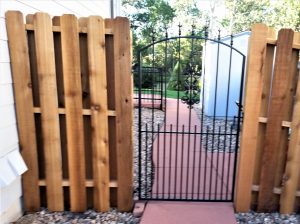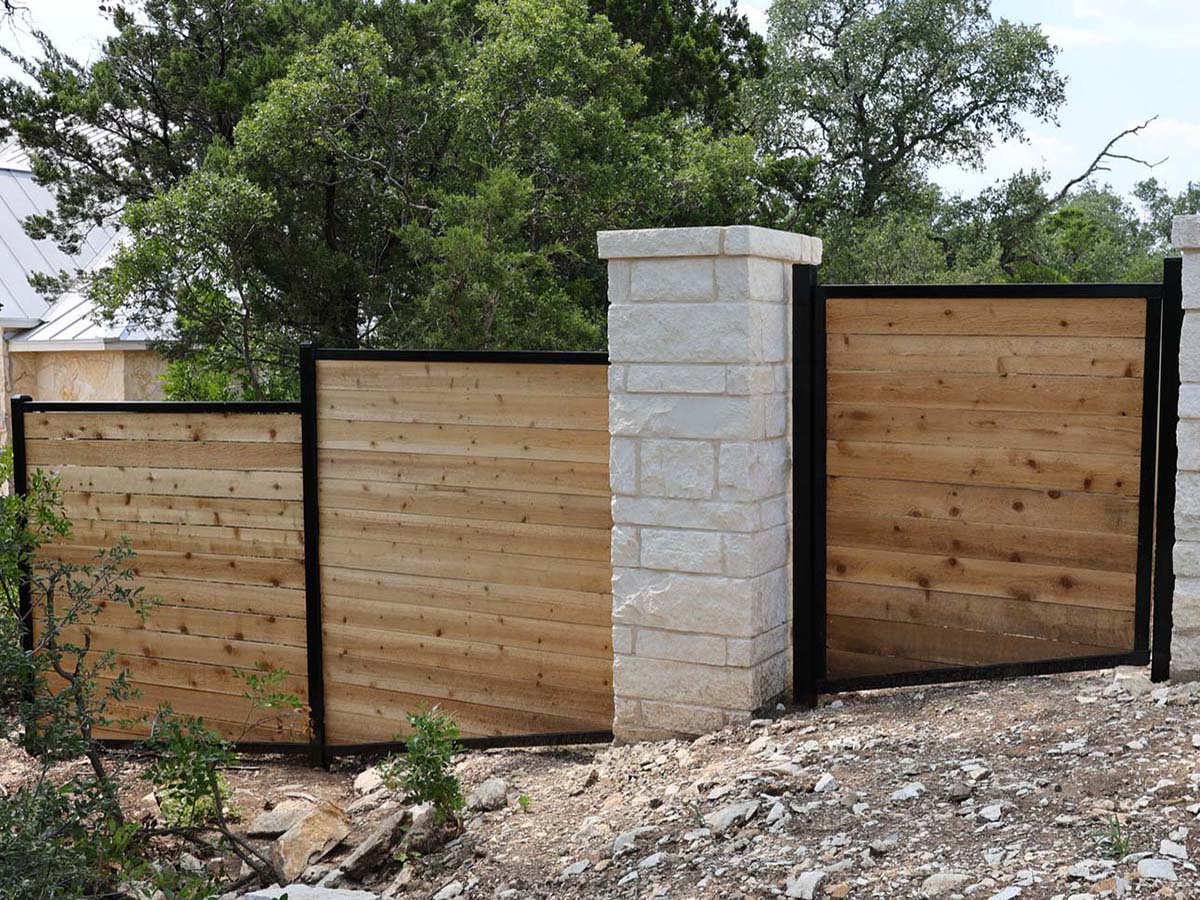All Categories
Featured
Your fence is subjected to numerous weather condition conditions year-round, and while it works as a vital part of your residential property, it's likewise among the most vulnerable aspects when it concerns weather-related damage. Rough winds, hefty rainfall, severe temperatures, and UV exposure can all take a toll on your fencing's integrity, bring about tear and wear. Thankfully, there are a few actions you can take to shield your fencing and lengthen its life-span. Below are some efficient methods to secure your fencing from weather-related damage.
Wood Fencings: While wood is a traditional choice for fencing, it is prone to bug, rot, and bending damages, especially in locations with high wetness. Pressure-treated timber or cedar is extra durable, however routine maintenance is necessary to maintain it in excellent problem. Vinyl Fence: Plastic is an excellent choice for those trying to find a low-maintenance and weather-resistant fence. It's invulnerable to dampness, will not warp or fracture in the warmth, and resists fading from UV rays. Metal Fencing: Wrought iron and light weight aluminum are resilient materials for fence, yet they need a rust-resistant coating to secure them from corrosion due to wetness. A safety finish or regular upkeep can prevent corrosion and extend the life of metal fencings. Composite Fencing: Made from a mix of timber fibers and plastic, composite fencings are highly resistant to weather aspects, including uv, warmth, and moisture rays. This product provides an equilibrium of sturdiness and visual appeal. Choosing a material fit to your environment will certainly give better security for your surround the long-term.
Seal or Discolor the Timber: Applying a top notch sealer or stain to your wood fencing produces a waterproof obstacle that stops wetness from getting in the timber. It likewise aids shield the timber from UV rays, which can trigger discoloration and drying out. Reapply Sealant Routinely: In time, the protective obstacle of your sealant or discolor can put on down. Relying on your climate, it's a good concept to reapply every one to two years to maintain the timber protected. This therapy will maintain the fence's appearance, stop rot, and lengthen its lifespan.
![]()
For additional security, consider making use of wind-resistant mesh screens or panels in areas where wind is a significant worry. This additional layer can assist minimize the pressure that the wind applies on your fencing.
Inspect Drain: Make certain that the ground around your fencing slopes far from the messages. Appropriate drainage enables water to move away from the fencing, protecting against moisture accumulation. Mount Drain Equipments: In locations where water drainage is a concern, take into consideration including a French drainpipe or gravel around the base of your fencing blog posts to reroute water far from the framework. Great drainage can avoid rot, corrosion, and various other types of weather-related damage.
![]()
![]()
Concrete Grounds: Set fence articles in concrete to prevent them from loosening up gradually due to dirt erosion or shifting ground. Steel Braces: Adding steel braces to fencing blog posts can provide added stamina and decrease the threat of breaking or leaning. Strengthening your articles guarantees that your fencing will certainly remain in place, also throughout serious weather condition.
For wooden fencings, gently wash the surface area with a mild detergent to get rid of dust and grime. For plastic fencings, use a soft cloth and cleaning solution to avoid accumulation. For steel fencings, examine for rust and sand it off prior to applying a fresh layer of paint. Verdict. Your fence is an important feature of your building, and with the best treatment, it can endure the challenges posed by the climate. By selecting durable materials, doing routine upkeep, and reinforcing powerlessness, you can shield your fence from the components and extend its life. Routine inspections, applying safety layers, and taking steps to regulate wetness and wind exposure will help make sure that your fencing continues to be solid, functional, and attractive for years to find.
- Select Weather-Resistant Products. The products you select for your fence can have a significant effect on its capability to endure the components. Different materials are much better furnished to manage certain weather. Below's a failure of exactly how different materials hold up versus the weather condition:
Wood Fencings: While wood is a traditional choice for fencing, it is prone to bug, rot, and bending damages, especially in locations with high wetness. Pressure-treated timber or cedar is extra durable, however routine maintenance is necessary to maintain it in excellent problem. Vinyl Fence: Plastic is an excellent choice for those trying to find a low-maintenance and weather-resistant fence. It's invulnerable to dampness, will not warp or fracture in the warmth, and resists fading from UV rays. Metal Fencing: Wrought iron and light weight aluminum are resilient materials for fence, yet they need a rust-resistant coating to secure them from corrosion due to wetness. A safety finish or regular upkeep can prevent corrosion and extend the life of metal fencings. Composite Fencing: Made from a mix of timber fibers and plastic, composite fencings are highly resistant to weather aspects, including uv, warmth, and moisture rays. This product provides an equilibrium of sturdiness and visual appeal. Choosing a material fit to your environment will certainly give better security for your surround the long-term.
- Frequently Treat Wood Fencings. If you have a wooden fence, securing it from moisture, temperature level, and sunlight changes is vital. Wood can take in moisture from rain, snow, or humidity, causing it to rot and wear away. Below's just how you can secure wood fences:
Seal or Discolor the Timber: Applying a top notch sealer or stain to your wood fencing produces a waterproof obstacle that stops wetness from getting in the timber. It likewise aids shield the timber from UV rays, which can trigger discoloration and drying out. Reapply Sealant Routinely: In time, the protective obstacle of your sealant or discolor can put on down. Relying on your climate, it's a good concept to reapply every one to two years to maintain the timber protected. This therapy will maintain the fence's appearance, stop rot, and lengthen its lifespan.

- Install Windbreaks. Strong winds can create substantial damages to fences, specifically those made of lightweight products or tall structures. Wind can fall a fencing or trigger panels to shift. Installing a windbreak is an efficient method to decrease the effect of gusty winds. You can produce a windbreak by planting shrubs, trees, or tall plants near your fence. These natural barriers can assist deflect wind, stopping direct gusts from harming your fence.
For additional security, consider making use of wind-resistant mesh screens or panels in areas where wind is a significant worry. This additional layer can assist minimize the pressure that the wind applies on your fencing.
- Ensure Appropriate Drainage Around Your Fencing. Standing water is just one of the leading root causes of fence damage, especially for wood fences. Water can damage the fencing articles, causing them to rot and degrade quicker. To stop this:
Inspect Drain: Make certain that the ground around your fencing slopes far from the messages. Appropriate drainage enables water to move away from the fencing, protecting against moisture accumulation. Mount Drain Equipments: In locations where water drainage is a concern, take into consideration including a French drainpipe or gravel around the base of your fencing blog posts to reroute water far from the framework. Great drainage can avoid rot, corrosion, and various other types of weather-related damage.

- Trim Overhanging Branches and Vines. Trees and plants near your fencing might seem like a decorative enhancement, yet they can present threats when left unchecked. Overhanging tree branches and vines can trigger damages to your fence throughout tornados or high winds. Additionally, vines can trap dampness against wood fences, quickening the decomposing procedure. To safeguard your fencing, trim any branches or plants that hang over or near the fence consistently. This will lessen the chance of falling debris and avoid dampness buildup.
- Strengthen Fence Posts. The security of your fencing mainly depends on the condition of the messages. Fencing articles are vulnerable to moving, leaning, and deteriorating, specifically throughout periods of extreme weather condition. It's essential to strengthen the articles to preserve security if your fence is in an area that freezes or experiences high winds throughout wintertime. Some methods to reinforce your fencing messages include:

Concrete Grounds: Set fence articles in concrete to prevent them from loosening up gradually due to dirt erosion or shifting ground. Steel Braces: Adding steel braces to fencing blog posts can provide added stamina and decrease the threat of breaking or leaning. Strengthening your articles guarantees that your fencing will certainly remain in place, also throughout serious weather condition.
- Routine Evaluations and Maintenance. Inspect your fence after storms or hefty rainfall to look for problems such as loose boards, sagging messages, or rusted locations. Additionally, cleansing your fence periodically helps keep its problem.
For wooden fencings, gently wash the surface area with a mild detergent to get rid of dust and grime. For plastic fencings, use a soft cloth and cleaning solution to avoid accumulation. For steel fencings, examine for rust and sand it off prior to applying a fresh layer of paint. Verdict. Your fence is an important feature of your building, and with the best treatment, it can endure the challenges posed by the climate. By selecting durable materials, doing routine upkeep, and reinforcing powerlessness, you can shield your fence from the components and extend its life. Routine inspections, applying safety layers, and taking steps to regulate wetness and wind exposure will help make sure that your fencing continues to be solid, functional, and attractive for years to find.
Latest Posts
Add Convenience and Personality to Your Home with Location Rugs
Published Apr 20, 25
1 min read
Seamless Floor Covering Installation-- The Carpet Interiors Floor & Home Method
Published Apr 20, 25
2 min read
See the Montclare Advantage - Professional Auto Repair
Published Apr 20, 25
2 min read
More
Latest Posts
Add Convenience and Personality to Your Home with Location Rugs
Published Apr 20, 25
1 min read
Seamless Floor Covering Installation-- The Carpet Interiors Floor & Home Method
Published Apr 20, 25
2 min read
See the Montclare Advantage - Professional Auto Repair
Published Apr 20, 25
2 min read